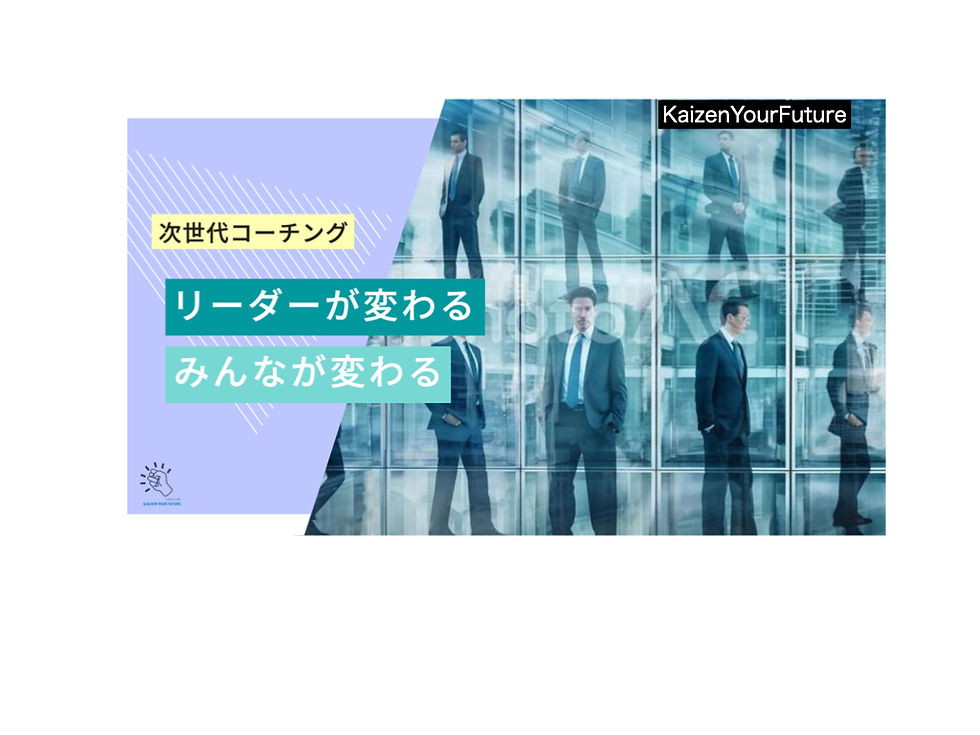Subjective position in conscious/unconscious research?
- Hatsuo Yamada
- Feb 3, 2022
- 2 min read
Updated: May 29, 2022
(Cognitive science) In coaching, rewriting the unconscious is a powerful means of achieving the goal.
By studying "Study of Consciousness", I would like to think about my method and the coaching theory, such as unconscious rewriting.
This series of blog posts is my study note.
Until the last time, we have looked at experiments such as subliminal imagery, change blindness and masking.
Stanislas Duanne conducted an experiment where a list of 37 words was masked invisible and displayed 20 times repeatedly.
After the experiment was over, I asked the subjects to distinguish between these words and the words they didn't show, and they couldn't tell.
This result indicates that they didn't remember the masked word.
At this time, there seems to be pros and cons among researchers about the act of "visiting the subject."
However, Duanne's position emphasizes the activity of conscious access = state of consciousness, so from that point of view, it is correct to listen to the subject's subjectivity.
* Conscious access: A mechanism to raise awareness of a lot of unconscious information around you
Masking is a subjective phenomenon, but many subjects agree.
When the display period falls below approximately 30 ms, all subjects report not seeing the word.
The minimum display time for a masked word to be visible varies slightly from person to person.
However, careful observation is required to adopt the subject's introspection as information.
(Introspection: Face yourself, reflect on your thoughts and actions, and notice)

For example, a patient who has undergone surgery may be under anaesthesia.
You may report that you have experienced an out-of-body experience.
"I was drifting near the ceiling and looking at my lying body from there," he says.
Should I take this testimony seriously?
Does the phenomenon of leaving the body and floating in the air "really" occur?
If we can clarify what kind of brain dysfunction this subjective experience results from, we can say that we have made a correct analysis.
We investigated many patients who underwent neurosurgery. As a result, we found that when the cortical area of the right temporoparietal junction was damaged or electrically disturbed, they repeated the sensation of out-of-body experience.
This area includes visual, somatosensory / motor sensation (tactile, muscular movement, brain mapping of activity signals), equilibrium sensation (the biological basis for inertia located in the inner ear and monitoring head movement). Multiple signals are gathered.
The brain determines the position of its body concerning the environment by combining various input information.
But when brain damage causes the signals to become disengaged or obscured, this process goes awry.
The out-of-body experience happens "really".
Although it is a physical event, it is a subjective experience in the patient's brain.
The sensation of out-of-body experience is intense dizziness that everyone experiences when there is a discrepancy between vision and balance, such as riding a violently swaying boat.
In the blog articles so far, I have organized that it has become clear from the results of various experiments that the data accumulated in the unconscious area can be raised to the consciousness by consciously pulling it out.
Future articles will focus on the unconscious and answer the following questions:
What's happening to the invisible image?
Is it processed in the brain?
How long does it stay, and what cortex area does it reach?
Does the stimulus change depending on how unconsciously it is held?









Comments